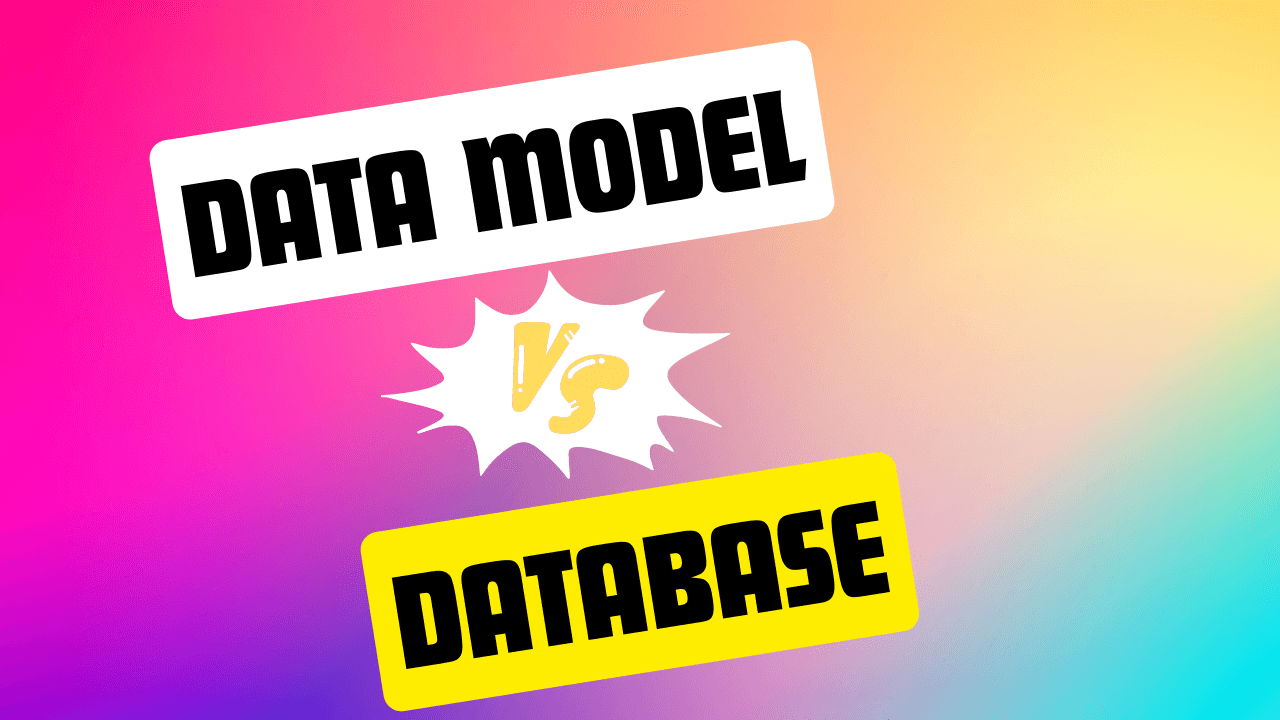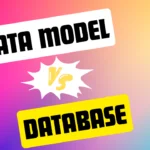Data is everywhere. We use data to communicate, learn, work, play, and make decisions. But how do we store and organize data in a way that makes sense and is easy to access? That’s where data models and databases come in.
Data Model
A data model is a conceptual representation of the data and the relationships among them. It defines what kind of data we have, what attributes they have, how they are grouped, and how they are connected. A data model helps us to understand the meaning and structure of the data, as well as the rules and constraints that govern them.
Database
A database is a physical collection of data that is stored and managed by a software system called a database management system (DBMS). A database allows us to store, retrieve, update, and manipulate data using various operations and queries. A database also ensures the quality, security, and integrity of the data.
Data Model vs Database
A data model and a database are related but not the same. A data model is an abstract way of describing the data, while a database is a concrete way of implementing the data. A data model is independent of any specific DBMS or technology, while a database is dependent on the DBMS and the hardware that it runs on.
Example
To illustrate the difference between a data model and a database, let’s use an analogy of a house. A data model is like a blueprint or a floor plan of the house. It shows what rooms the house has, how big they are, what furniture they have, and how they are connected. A data model does not specify the color of the walls, the type of flooring, or the brand of appliances.
A database is like the actual house that is built based on the blueprint. It shows the physical appearance and functionality of the house. A database does specify the color of the walls, the type of flooring, and the brand of appliances. A database also has features that are not visible in the blueprint, such as locks, alarms, or plumbing.
Types of Data Model:
There can be different types of data models and databases depending on the purpose and scope of the data. Some common types of data models are:
- Hierarchical: The data are organized into a tree-like structure, with one root node and multiple levels of child nodes. Each node can have only one parent node, but can have multiple child nodes. This type of data model is suitable for representing hierarchical or nested data, such as file systems or organizational charts.
- Network: The data are organized into a graph-like structure, with multiple nodes and links. Each node can have multiple parent nodes and multiple child nodes. This type of data model is suitable for representing complex or many-to-many relationships among data, such as social networks or transportation networks.
- Relational: The data are organized into tables, with rows representing records and columns representing fields. Each table has a primary key that uniquely identifies each record, and can have foreign keys that reference other tables. This type of data model is suitable for representing structured or tabular data, such as inventory or customer information.
- Object-oriented: The data are organized into objects, with attributes representing properties and methods representing behaviors. Each object belongs to a class that defines its characteristics and inheritance. This type of data model is suitable for representing real-world entities or concepts, such as products or animals.
- NoSQL: The data are organized into flexible and dynamic structures, such as documents, key-value pairs, graphs, or columns. There is no predefined schema or rigid rules for the data. This type of data model is suitable for representing unstructured or semi-structured data, such as web pages or sensor readings.
Types of Database:
Some common types of databases are:
- Hierarchical: A database that implements the hierarchical data model using pointers or links to connect records. An example of a hierarchical database is IBM’s Information Management System (IMS).
- Network: A database that implements the network data model using pointers or links to connect records. An example of a network database is Integrated Data Store (IDS).
- Relational: A database that implements the relational data model using tables and SQL (Structured Query Language) to manipulate data. An example of a relational database is Oracle Database.
- Object-oriented: A database that implements the object-oriented data model using objects and OQL (Object Query Language) to manipulate data. An example of an object-oriented database is ObjectStore.
- NoSQL: A database that implements one or more types of NoSQL data models using various technologies and languages to manipulate data. An example of a NoSQL database is MongoDB.
Conclusion
In summary, a data model is a conceptual representation of the data and their relationships, while a database is a physical collection of data that is stored and managed by a DBMS. A data model is independent of any specific DBMS or technology, while a database is dependent on the DBMS and the hardware that it runs on. There can be different types of data models and databases depending on the purpose and scope of the data.
Latest Posts:
- Top 5 CRM Software for Small Business Owners in 2024
- Introduction to Unix Shell Programming
- Enterprise Resource Planning: The Key to Business Success
- Data Model vs Database: What’s the Difference?
- Digital Smell Technology (e-nose): An Overview
See More:Featured
![]()






